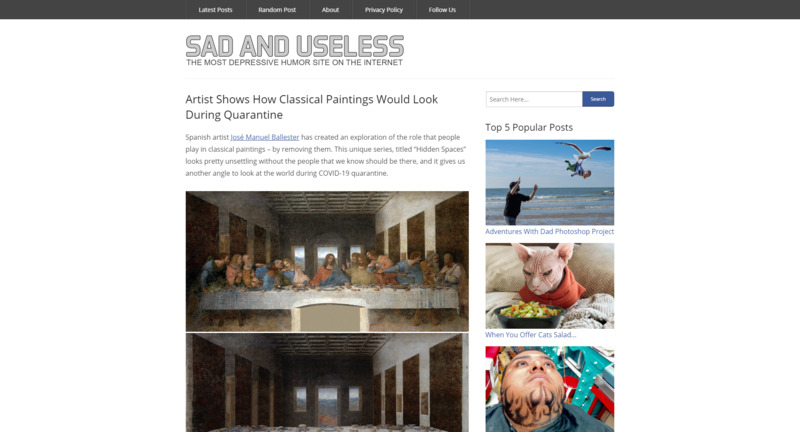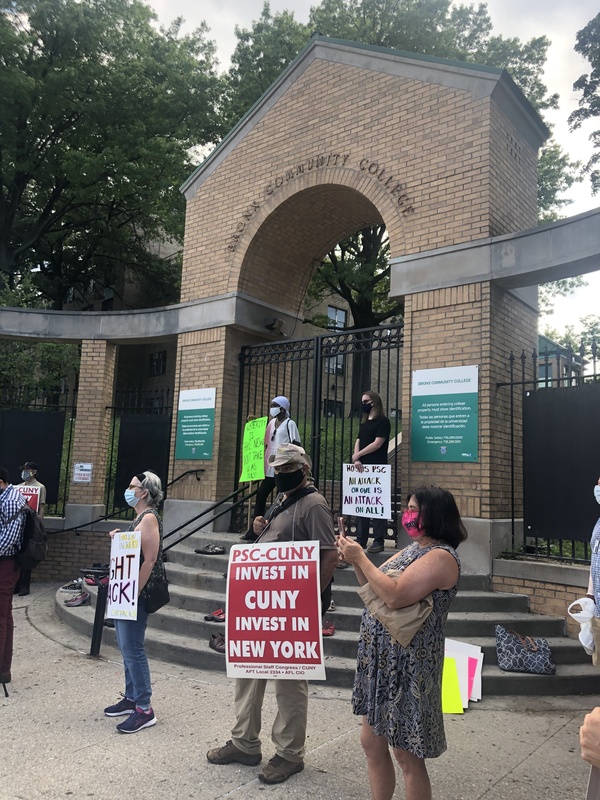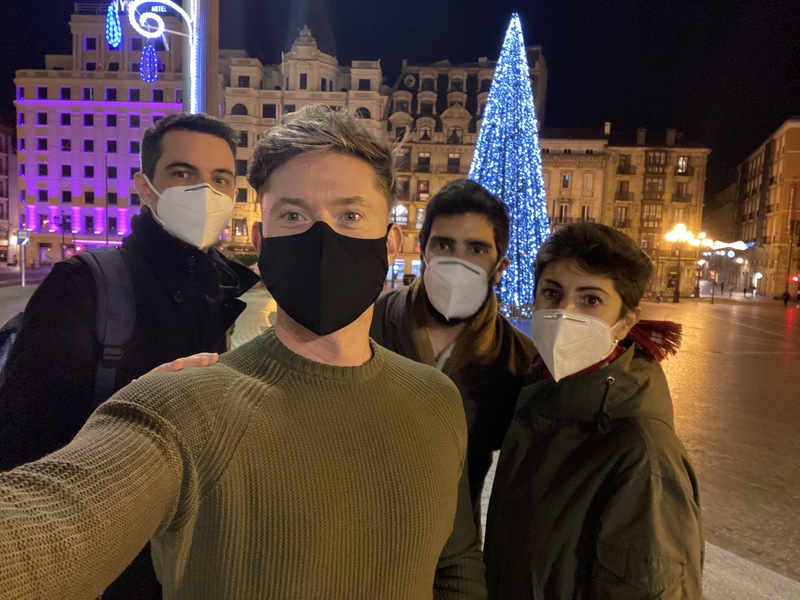Items
Tag
Bronx Community College
-
 2021-05-18
2021-05-18Quarantine leaves us incomplete
Quarantine was a hard time on us all; it hit most of us out of nowhere and left us locked inside our homes for what an eternity and for most people, they had to spend that time alone. I did not go out a lot during this time so I went online and chose the pictures that I believe best represent what mine and many others felt their quarantine was like. Jose’ Manuel Ballester, a Spanish artist recreated iconic historical paintings and removed the most pivotal part in each of them; the people. Dubbed “Hidden Spaces”, Ballester recreates a series of works in which he is able to present an angle of how the world is like during quarantine. Iconic masterpieces like the Last Supper is left to just an empty table. Ballester is able to show the loneliness and emptiness that quarantine has left people in, by removing the people from the paintings Ballester thus leaving the audience with a certain feeling of discomfort reminiscent of the lack of company and interaction leaves us feeling when we are quarantined and I really resonated with these photos because that is how I felt during this quarantine. -
 2020-07-15
2020-07-15PSC-CUNY Protest at BCC
For my primary source, I selected a photograph I took at a protest held in front of the Bronx Community College campus on July 15, 2021. The Professional Staff Union of CUNY (PSC-CUNY), the union for the faculty and much of the staff throughout CUNY, organized the event to protest the BCC administration June 26 decision to lay off 36 experienced adjunct professors at the end of their 3-year contracts, even though that their departments recommended that they be rehired. People in the picture include BCC Faculty, staff, and students, as well as those from as well as people from Hostos Community College, who came to support the BCC community and were facing similar cuts. The day was very hot, but I was nervous to the subway because of COVID, so I rode my bike from my home (about 24 miles roundtrip). I was pretty sweaty and probably stinky when I arrived. It was the first time I had been to campus since March 10, when, on my way home from school on the subway, I learned CUNY was moving online. (The campus itself was locked, but we stood in front of the gate on University.) It was also the first time I people from school in person since March; I was so happy to talk to them. It was weird to be with a group people, after months of isolation, but we all wore masks and stood six feet apart. Cars honked their support as they drove by. I selected this source because I want historians of the future to understand how the pandemic hit higher education and the connections among the COVID crisis, social justice movements, and education. Although I went to larger marches after the murder of George Floyd, I believe funding for CUNY is a form of social justice. I was angry that politicians and school administrators were giving lip-service to the phrase Black Live Manners, while cutting funding and jobs from CUNY. BCC’s students are overwhelmingly Black and Latinx, and many studies show that a CUNY education is one of the best schools for supporting social mobility, helping people support themselves and their families. Firing the adjuncts not only meant the teachers lost their income, and, sometimes, their health insurance, but that BCC students would be in larger classes; larger classes mean faculty have less time to devote to each student, which can make it harder to for students to succeed. While I understood enrollment was down and the budget from the city and state would likely be smaller because of the economic toll of the pandemic, I thought there were other places the administration could cut costs. (Such as their own salaries). I want historians to see that the faculty and staff of CUNY fought for what their students deserved and the connections among CUNY, social justice, and New York’s economic recovery. I also want them to see how people approached protests, which require gathering together with other people and often chanting or shouting, while in the middle of a pandemic that required people to stay apart and cover their mouths. -
 2020-11-15
2020-11-15New York, Bilbao, New York
In November 2020 I began reading Kirmen Uribe's novel Bilbao New York Bilbao while in Bilbao, Spain with my partner. We were there to care for his father who is suffering through the late stages of dementia and to spend time with his family who he had not seen in a year. Uribe's novel is important to my plague year for many reasons. He talks about the split mind being from Bilbao yet living in New York. My partner is from Bilbao, and the novel helps me understand his mindset. But Uribe also talks about the ways humans remember and carry pain and mark loss. Unlike trees who carry their growth in their rings or fish who mark time through their scales, humans mark time and pain through simply marking time. He notes that fish grow their entire lives, but humans start dying and shrinking from the moment we hit maturity. Growth, it seems is only for the fishes. My plague year was marked by my entire partner's family getting the virus, a story of gradual family loss, one of borders, and of course a presidential election. The pandemic closed not only schools and bars but also borders and our chances to move between Spain and the U.S. in any straightforward way. When we began planning the trip in the summer of 2020, we came up against all of the travel bans in place. My Spanish partner could get to Spain, but I could not. So, the research began, and I spent more time on Facebook groups than any person should be allowed to. We knew we weren't going to Spain just to have fun. We needed to take care of his father, but it felt like we were doing something wrong. Love, it turns out, knows no national borders, but border agencies certainly do. To get to Spain, he just hopped a plane to Madrid. I had to go through Lisbon, London, and Paris before arriving there. On the way back, I hopped on a plane flying directly to New York. He had to quarantine in Mexico for two weeks. Our stay there was marked by his father's continued decline but also moments of joy. The picture here captures one of those. As a U.S. citizen, his Spanish family and friends are always asking me about U.S. culture and practices. One of my tasks in Spain was to cook a big American Thanksgiving dinner, which I did with gusto. I made all the things: turkey, sweet potatoes, green bean casserole, mashed potatoes, cranberry sauce, and pecan pie. I tried to explain the significance of each dish while realizing how insignificant and somewhat gross Thanksgiving foods are. But we had fun and spent the night after the meal singing "American" songs and discussing art--his cousins are all artists. That night, one of his friends recommended I read Uribe's novel. So, I ordered it that night. It is a lonely book of loss and thinking about how art marks that loss. I think that is how we marked our time in Spain contemplating everything we had lost in 2020 and everything we were gradually losing. We spent time at the Guggenheim and Fine Arts museums in Bilbao. In fact, we waited for my partner's COVID test while browsing the Fine Arts Museum. It turned out positive, and we separated at the point for two weeks. But the picture here represents a moment of joy as we said goodnight to my partner's cousins after the Thanksgiving weekend. I hope for all the clichés of going back to normalcy. And we probably will get back to the "before times" given humans' inability to learn from any of their experiences. But I am one of those humans and just want to sit at a bar and talk to strangers again. When that normalcy returns, I will look back at this picture and remember Uribe's words: "As with the growth rings of fishes, terrible events stay on in our memory, mark our life, until they become a measure of time. Happy days go fast, on the other hand--too fast--and we forget them quickly." Maybe Uribe is wrong, though. I will not be forgetting this day anytime soon.
